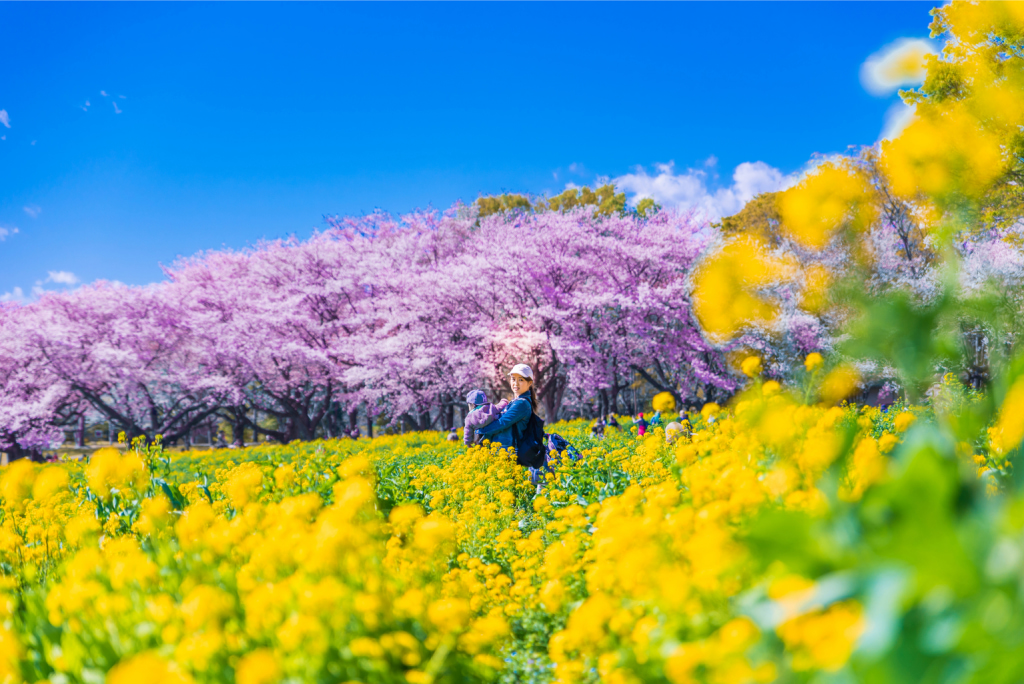The wintery season is on its way out – and Tokyo’s hanami season is on its way in! Stick to your old favorites, or try out a new park on for size. Here is your guide to cherry blossom around Japan’s capital.
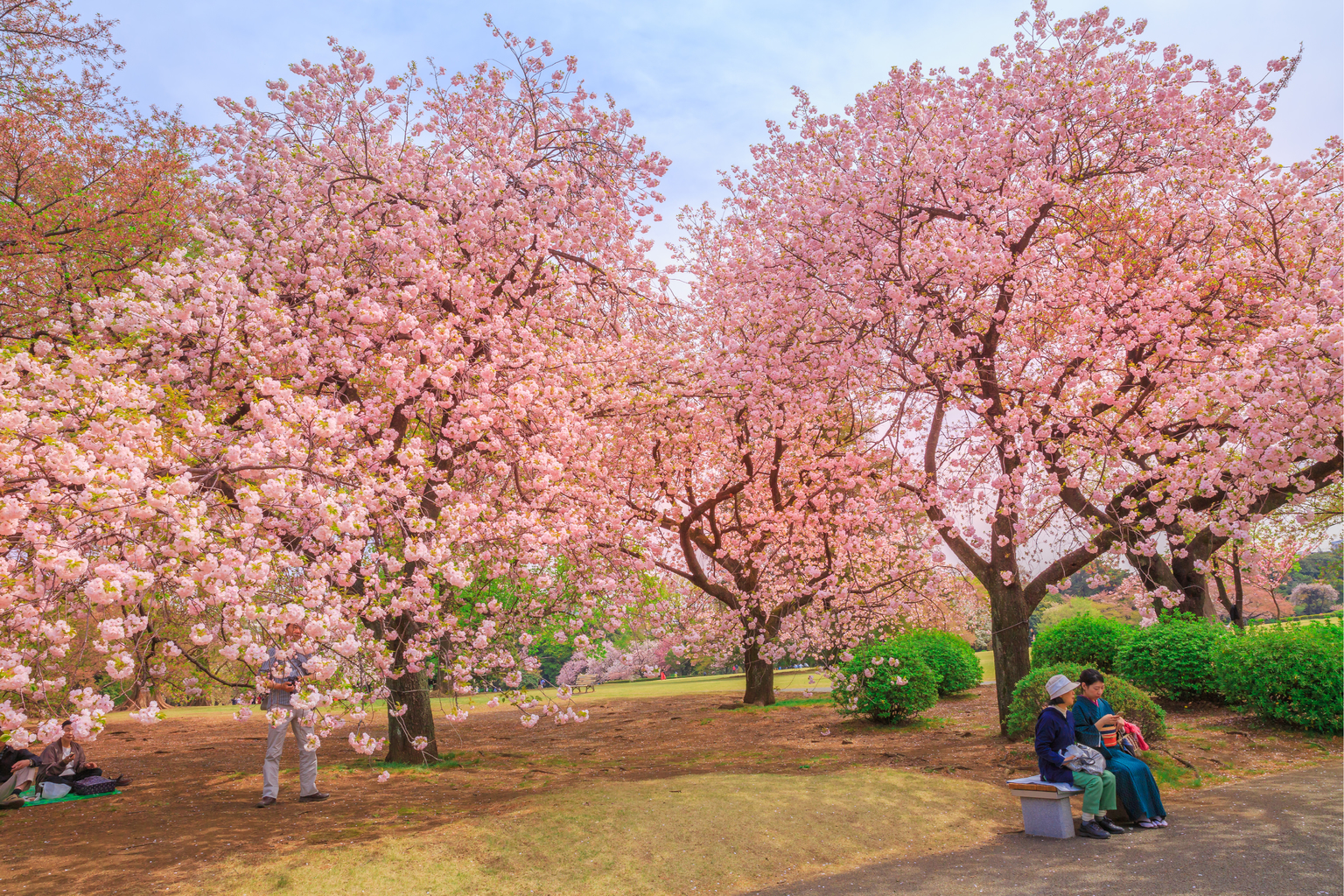
Shinjuku Gyoen
One hundred and forty acres, divided into three distinct park styles (Japanese, French, and English, with a bonus “Imperial” and “Greenhouse” area) make up Shinjuku Gyoen. It’s certainly one of the more formal parks in the area, with its well-kept appearance, tidy ponds, and neatly knit-together flower fields. Keep in mind their park regulations (that is, no alcohol allowed, entrance fee of ¥500 per person), especially for picnics and true hanami spirit, and mindful of park hours, but be sure to include it on your list of places to check out while you’re plotting your park-hopping course. Map
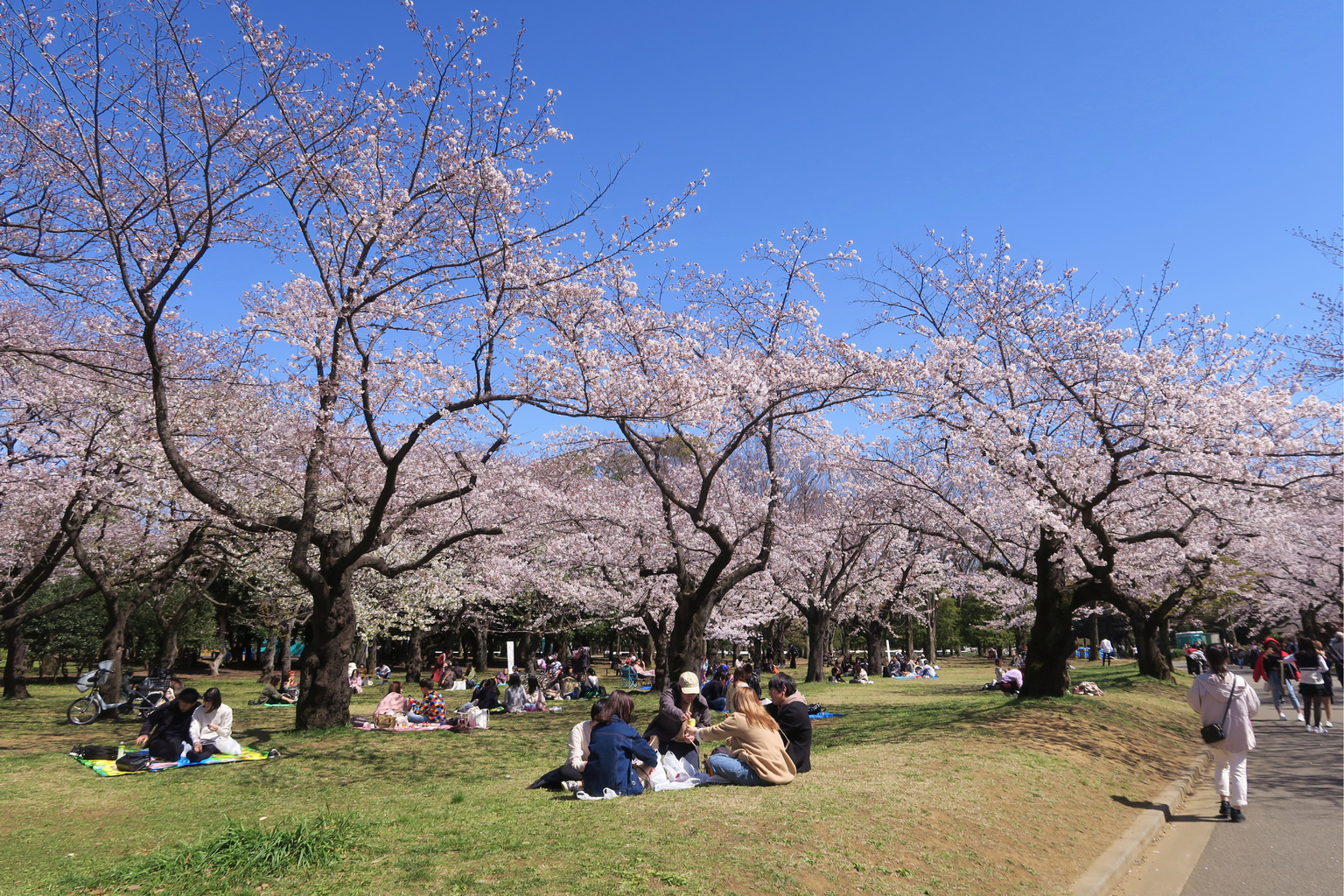
Yoyogi Park
If you want one stop for all things traditional “hanami,” (read: “getting inebriated under pink trees”), look no further than Yoyogi Park. Incomparable when it comes to park partying, Yoyogi Park is always a rowdy spot to crash. You’ll see street performers, organized office hanami meetings, school groups mingling, sport competitions, troupes of lolita girls, college students traipsing through, and all sorts of festivals and markets happening. Map
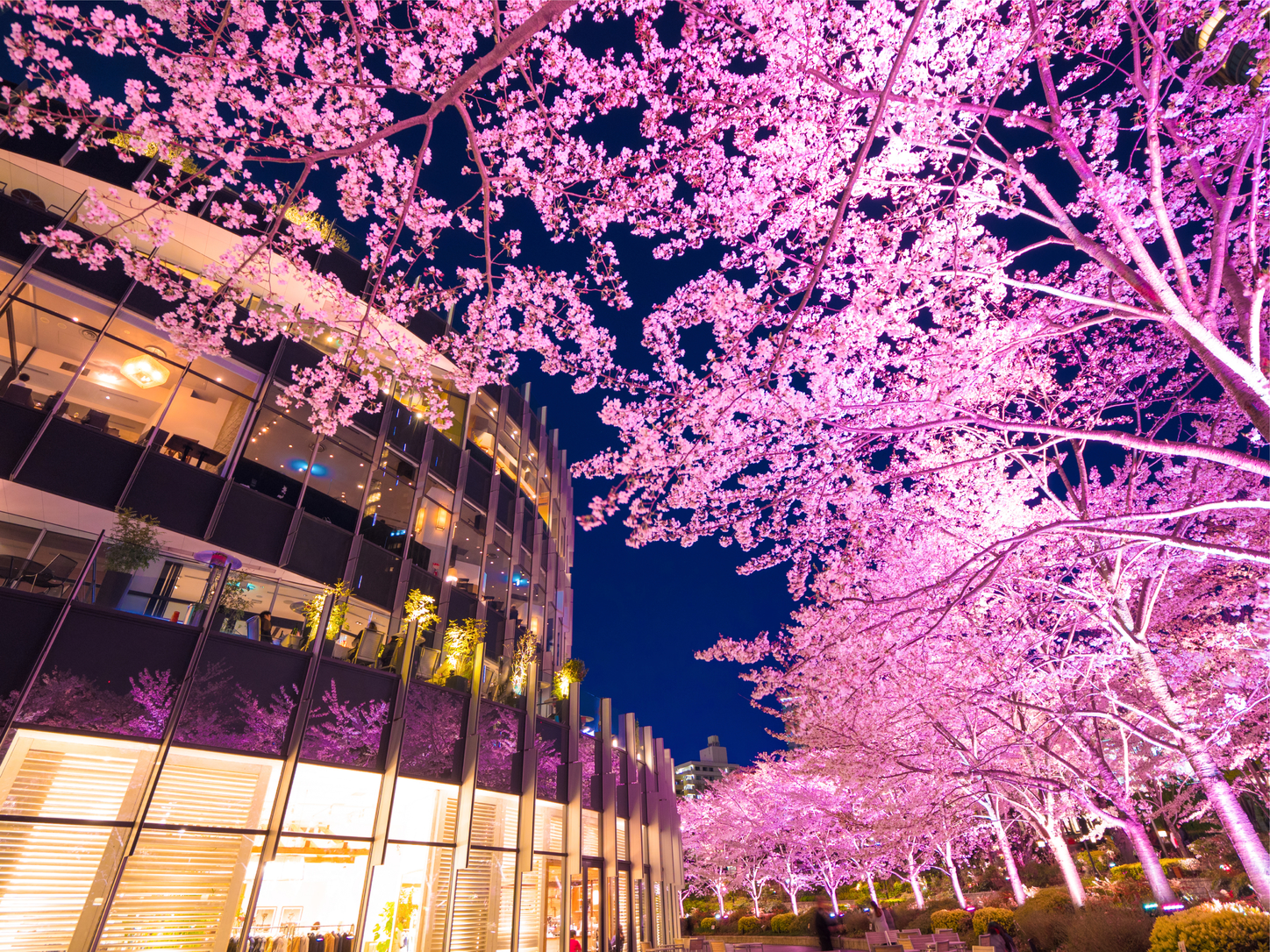
Roppongi Midtown
Roppongi is the place to go for a classic “Tokyo night out” date, with tons of museums, places to eat, cinemas, and flowering cherry trees everywhere you look. Head to Midtown for terrace dining areas, illumination, and sidewalks lined with trees. Nearby, Ark Hills is a winding street with stunning night views of popcorn-style cherry blossom trees. An expansive park behind ANA Intercontinental Hotel is yet another place to see some blossoms, and lie back on a sloping lawn in the middle of the city. Map
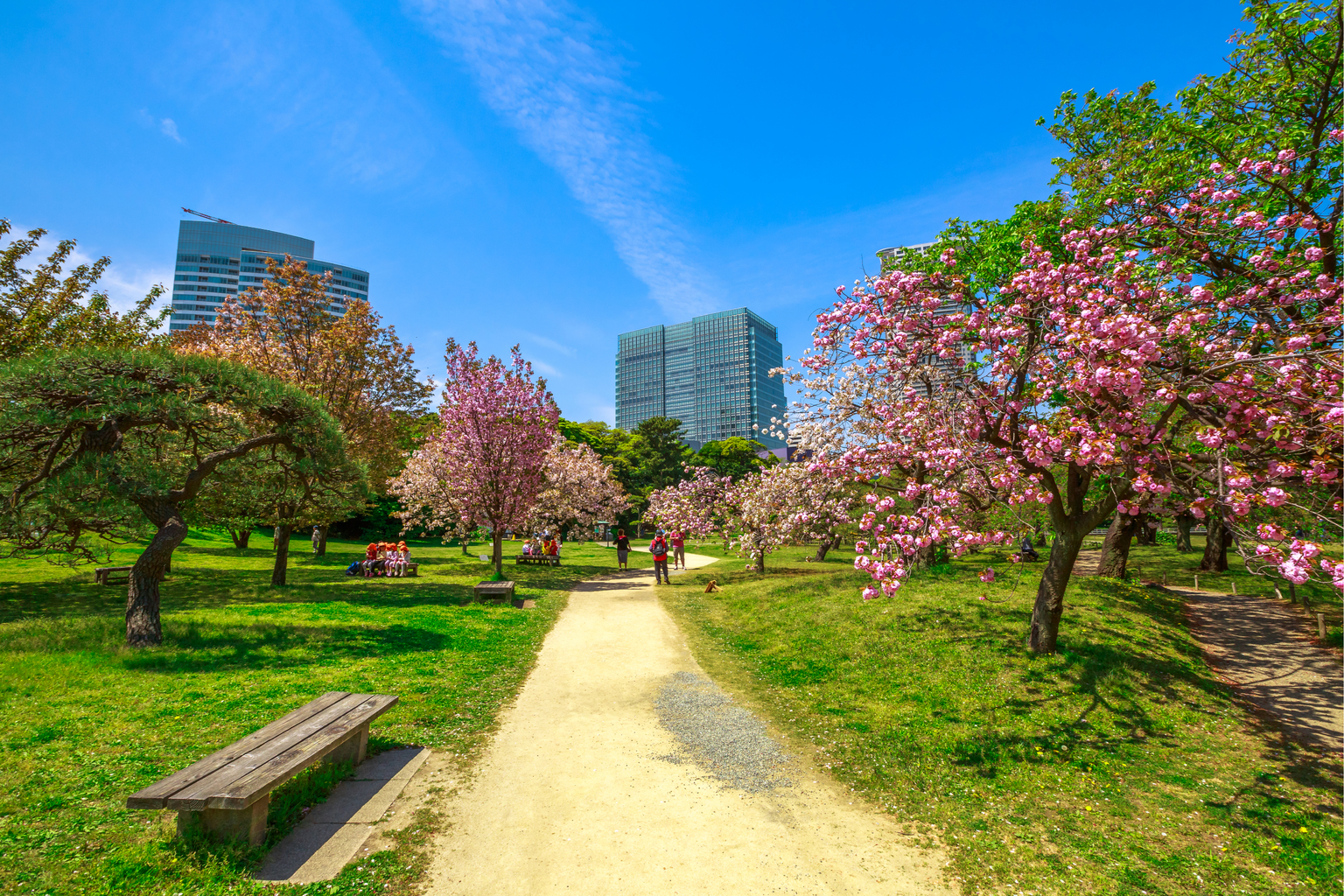
Hamarikyu Gardens
Hamarikyu is a favorite for those who love the juxtaposition of the harsh Tokyo skyline of blue skyscrapers against the bright pink blossoms and deep yellow canola flowers. The garden and park are quite small in comparison to others, but has small streams, wooden bridges, and a cafe to take a break at. Many come for the panoramic views of Tokyo, even Tokyo Tower, and the duck ponds. Not too many cherry blossom trees, and strict rules on picnicking there, but the ¥300 entrance fee is well worth a morning walk across the stone paths. Map
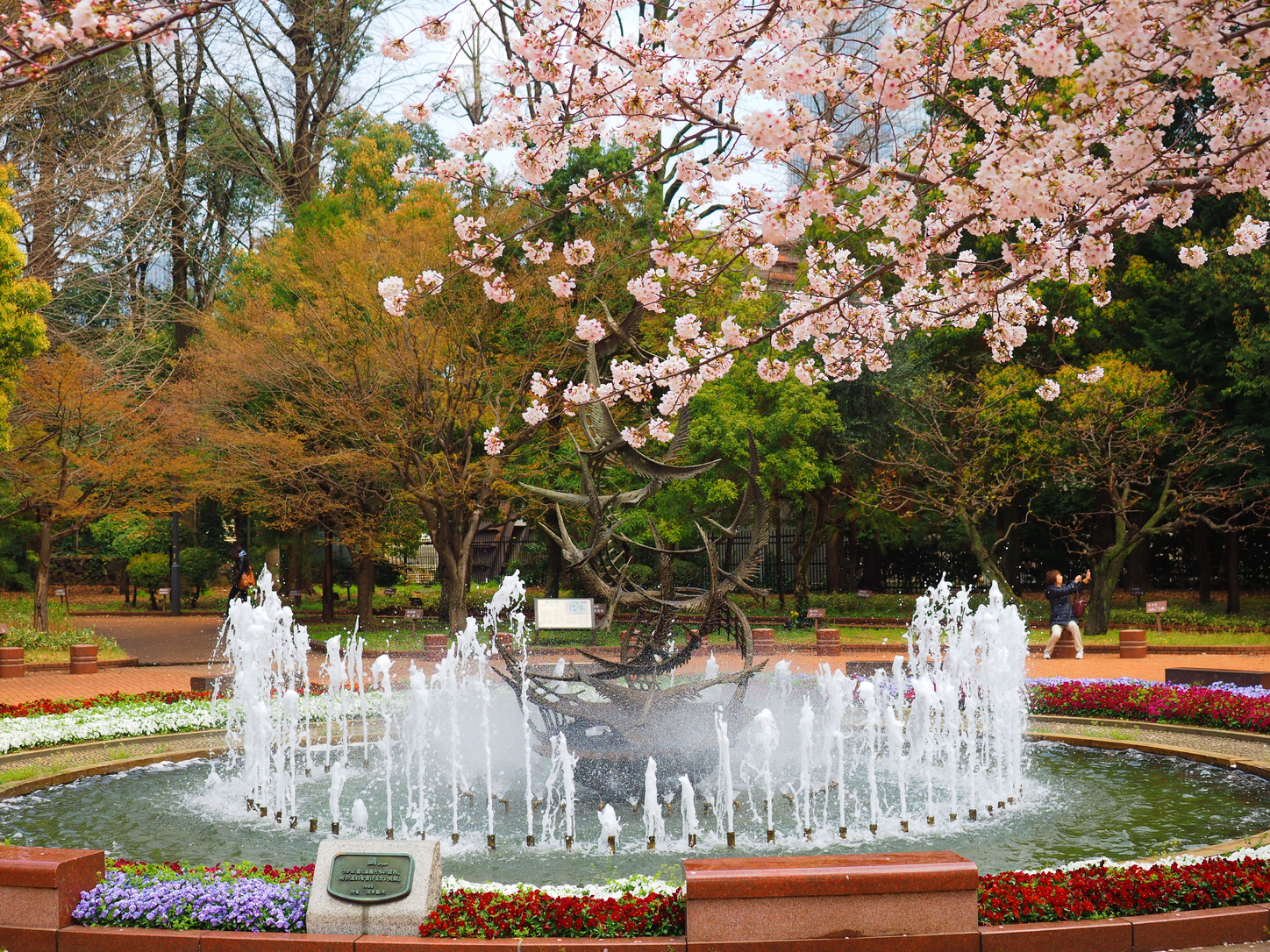
Hibiya Park
Hibiya is the epitome of a downtown park in Tokyo. It’s got markets, concerts, ponds, the city’s oldest ginkgo tree, protected flower gardens, “gothic” statues, sports centers and fields, restaurants, weekly protests, fountains, festivals, and some of the oldest hotels surrounding it. Go during the day and you’ll see a park full of suited-and-tied salarymen; go on the weekends and you’ll see an oddball mix of the whole population of Tokyo. A stone’s throw from the Imperial Palace, Hibiya Park is easily accessible from a number of subways and JR lines. This historically important park is certainly one you should have on your hanami list this year. Map
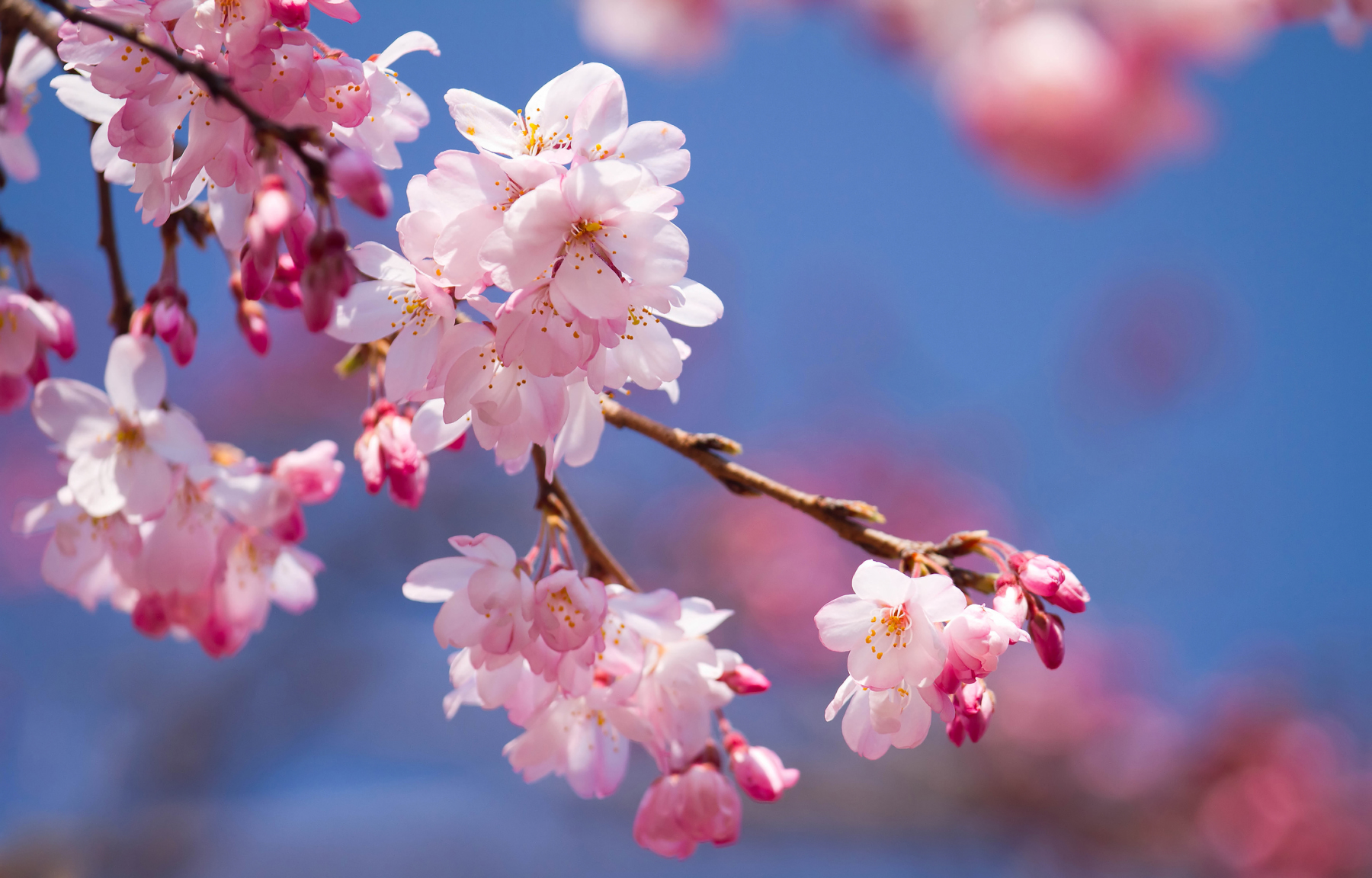
Komazawa Olympic Park
Komazawa Olympic Park is a favorite for many for several reasons: it’s dog friendly, there are tennis and basketball courts, running and cycling tracks, baseball and soccer fields, rose gardens, and plenty of open air to stretch out and relax. Komazawa, stunning in all seasons, is consistently popular all year ’round, but if you only have a few chances to go, make sure you check it out during hanami season. Bring your sports gear, bike, or a furry friend for a sunny and adventurous day down near Komazawa University. Map
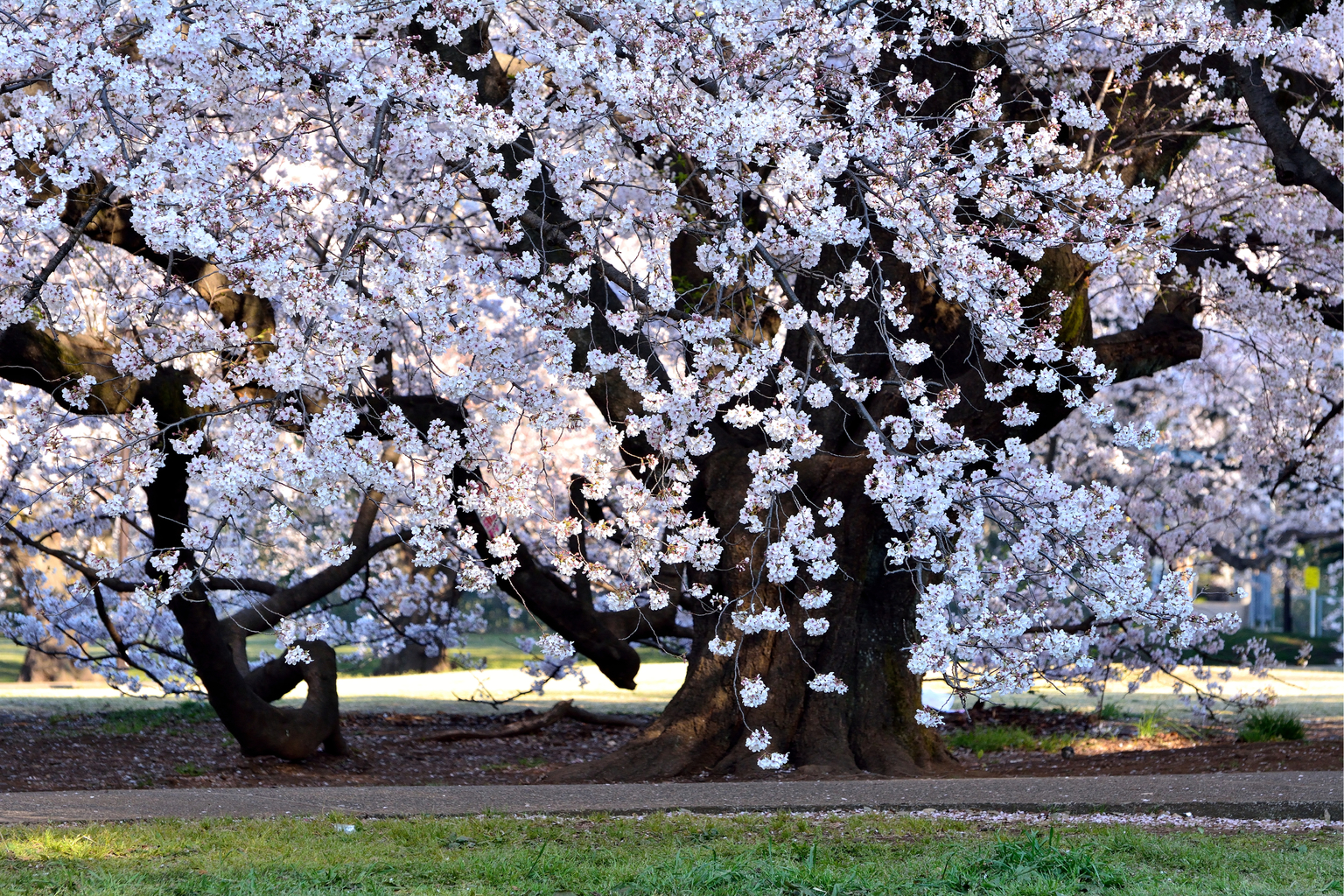
Kinuta Park
Deep in the heart of Setagaya Ward is Kinuta Park, situated beside the Setagaya Waste Disposal Plant (not the first place you’d think for a giant park to be). The expansive park is home to a number of sports fields, a bird sanctuary, the Setagaya Art Museum, and beautiful flower and fruit gardens. Pathways wind through forests, and small bridges shelter solo musicians who light up the sunny weekend afternoons with their tunes. It’s a bit far to walk to from the nearest station (about 20 minutes, in fact), so get ready to stretch your legs – or, rent a bike, if you’re a member of the Setagaya Ward Bike Rental community (Japanese site) or through a biking app. Map
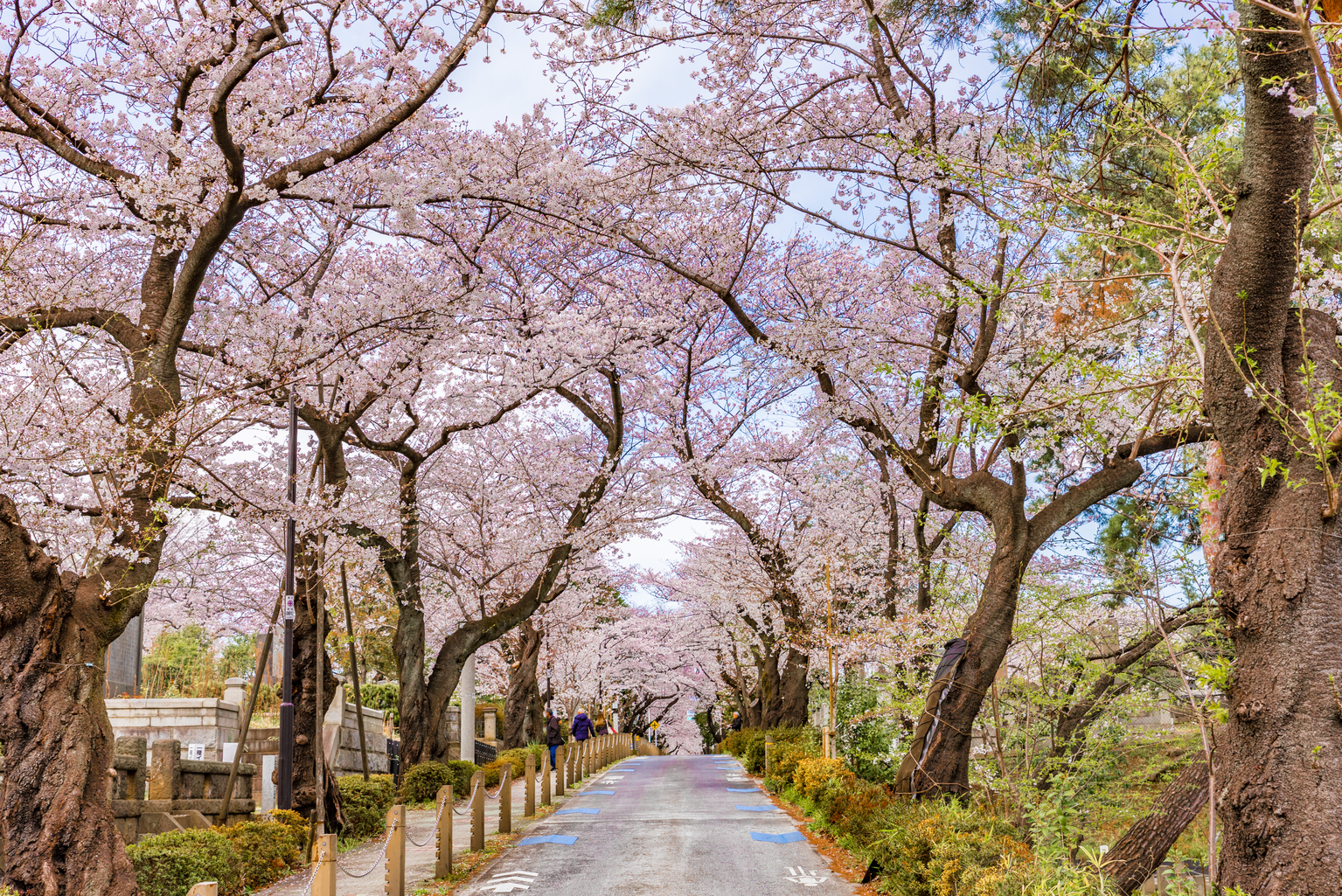
Aoyama Cemetery
Cemeteries and pretty pink flowers don’t seem like a match made in heaven…but Aoyama Cemetery proves otherwise. The largest cemetery in Tokyo, in between Akasaka and Roppongi, the beautiful cemetery stretches over a fewer geographically higher points in the city, so you’ve got a view to go with your hanami as well. If you’re looking for a quiet stroll under the blossoms, there aren’t many quieter places in all of Tokyo. Map
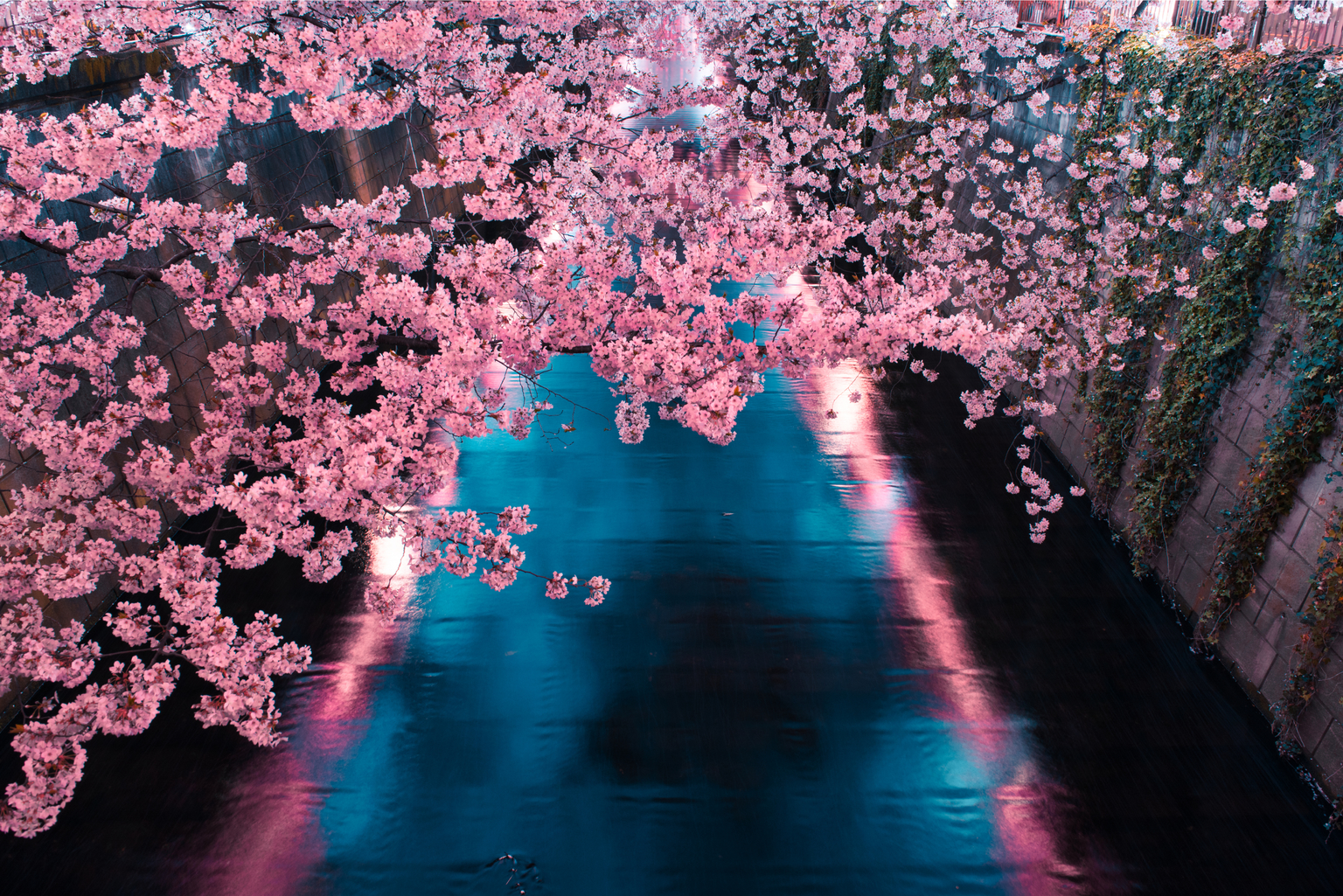
Nakameguro
Nakameguro is neither a garden nor a park, but rather a neighborhood with one of the more prominent canals of Tokyo wrapping its way between streets, all lined with low-hanging cherry blossom trees. The river is lined with bright pink lanterns during the spring season, and during hanami week there are throngs of booths serving up hot “yaki”-types of eats, and plenty of chu-hi cans opening left and right. Not best for a quick peek, as the crowds are slow-moving as they take in all of the sights. Cross over the bridges for a better look down the canal, and to capture the coveted “river sakura” image. Map
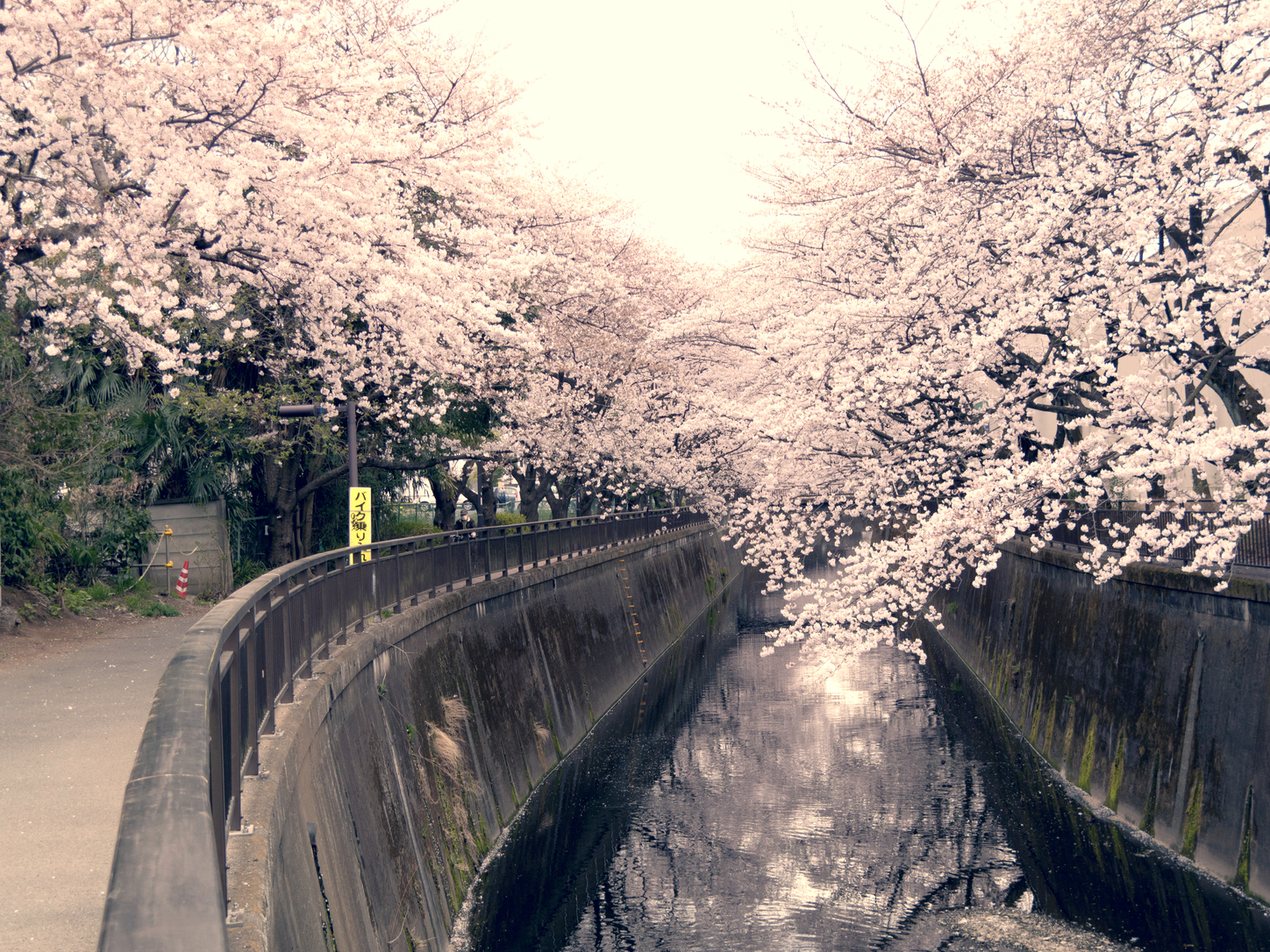
Seijo
The Seijo neighborhood of Setagaya is a quiet and muted, soft-pastel area that may often be overlooked or passed up for more glamorous districts of Tokyo. Poised along the Odakyu Line, it may not be the first place you think of for cherry blossoms, but the visit is more than worth it. Sengawa, a quaint canal that runs gently through the heart of the town, is lined with thick cherry blossom trees on either side. Petite bridges weave across the canal, allowing wanderers to meander at their leisure. The best part? If you head south down the canal, you’ll come across famed the famed Toho Studios, which distributed classic films by Akira Kurosawa and Yasujiro Ozu—though the most notable is arguably the 1954 cult hit Godzilla. Map
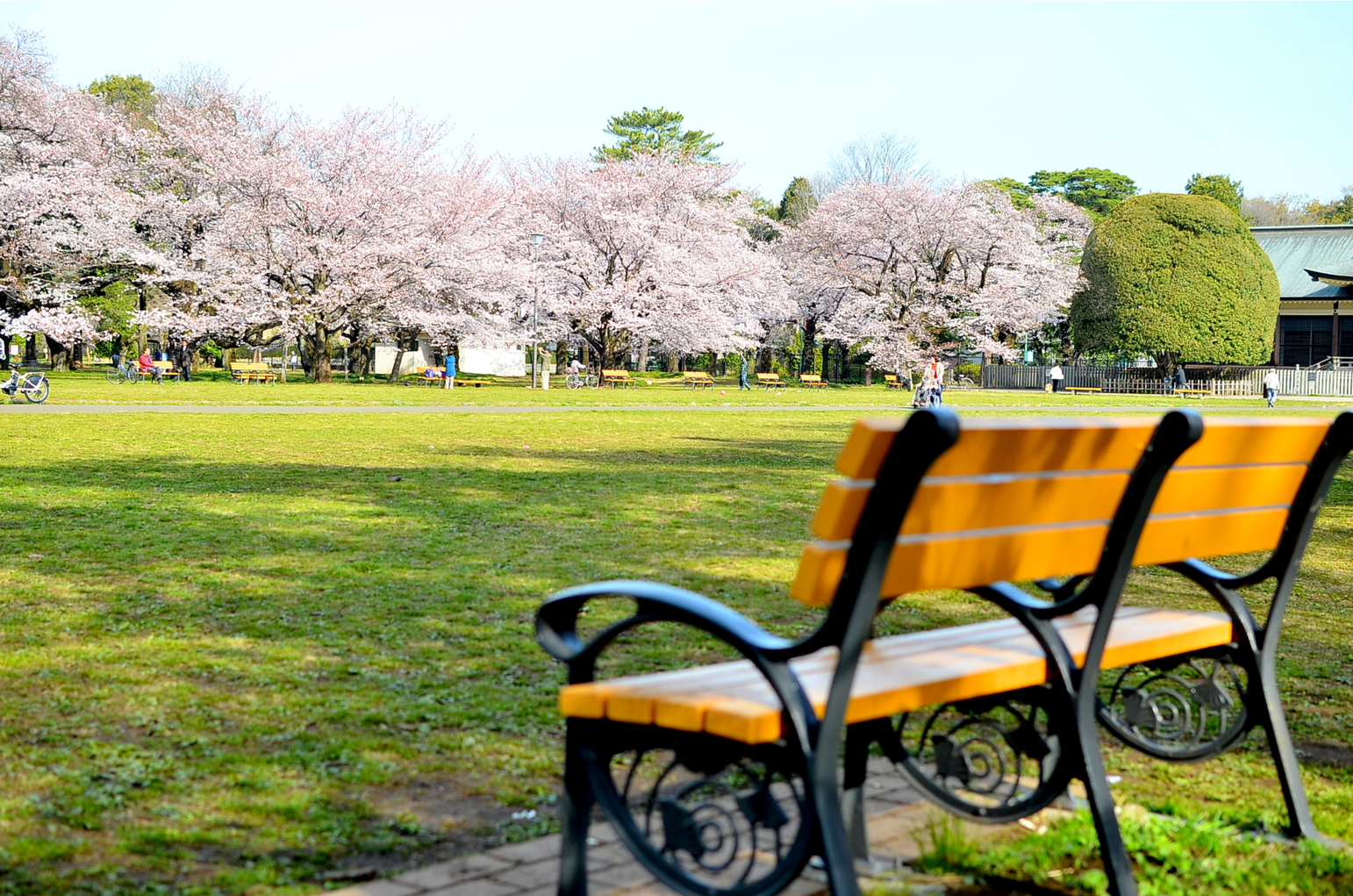
Koganei Park
Often overlooked – even though it’s the second largest park in all of Tokyo – Koganei Park is home to 1,700 sakura trees has and lots of space to roam around. With spots to grill BBQ safely, and plenty of bicycle-only tracks, this is one of the most vibrant and lively parks to explore. We recommend covering as much ground as possible – there is an open air museum, shrines, temples, fountains, and lots of hidden groves to find peace, quiet, and something more than just a day at the park. Map
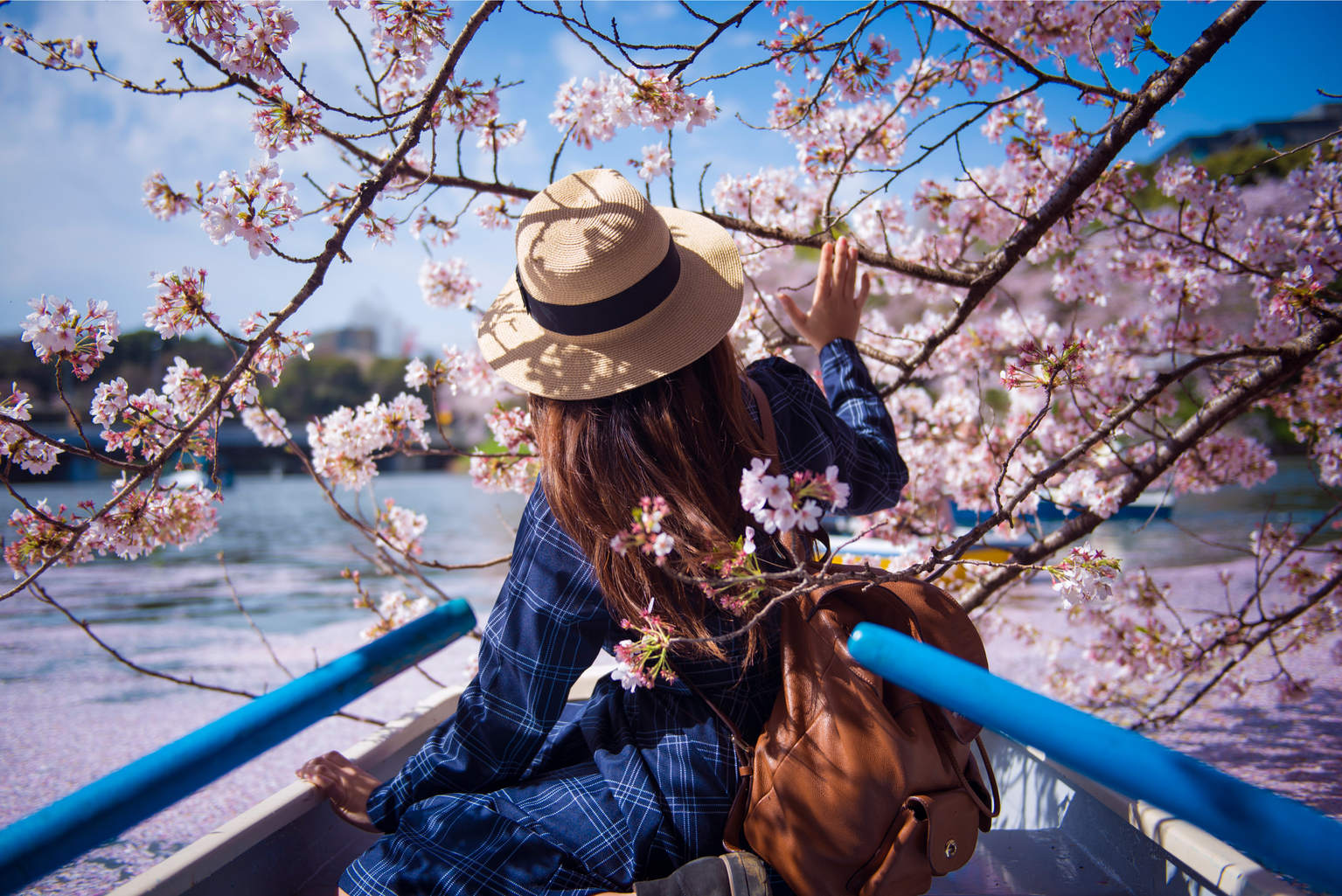
Chidori-ga-fuchi and the Imperial Gardens
A large, neat, smoothly sloping hill covered in a blanket of pink blossoms leads down into the moat that surrounds the Chidori-ga-fuchi Park at the Imperial Gardens. The river is wide and still, welcoming boaters with its glittering surface a romantic view of the petals drifting in the wind. Many other seasonal flowers festoon the gardens, making it a favorite place for tourists and returning visitors alike. Runners often use the surrounding path as a part of their routine just for the view – and it’s easy to understand why. Map
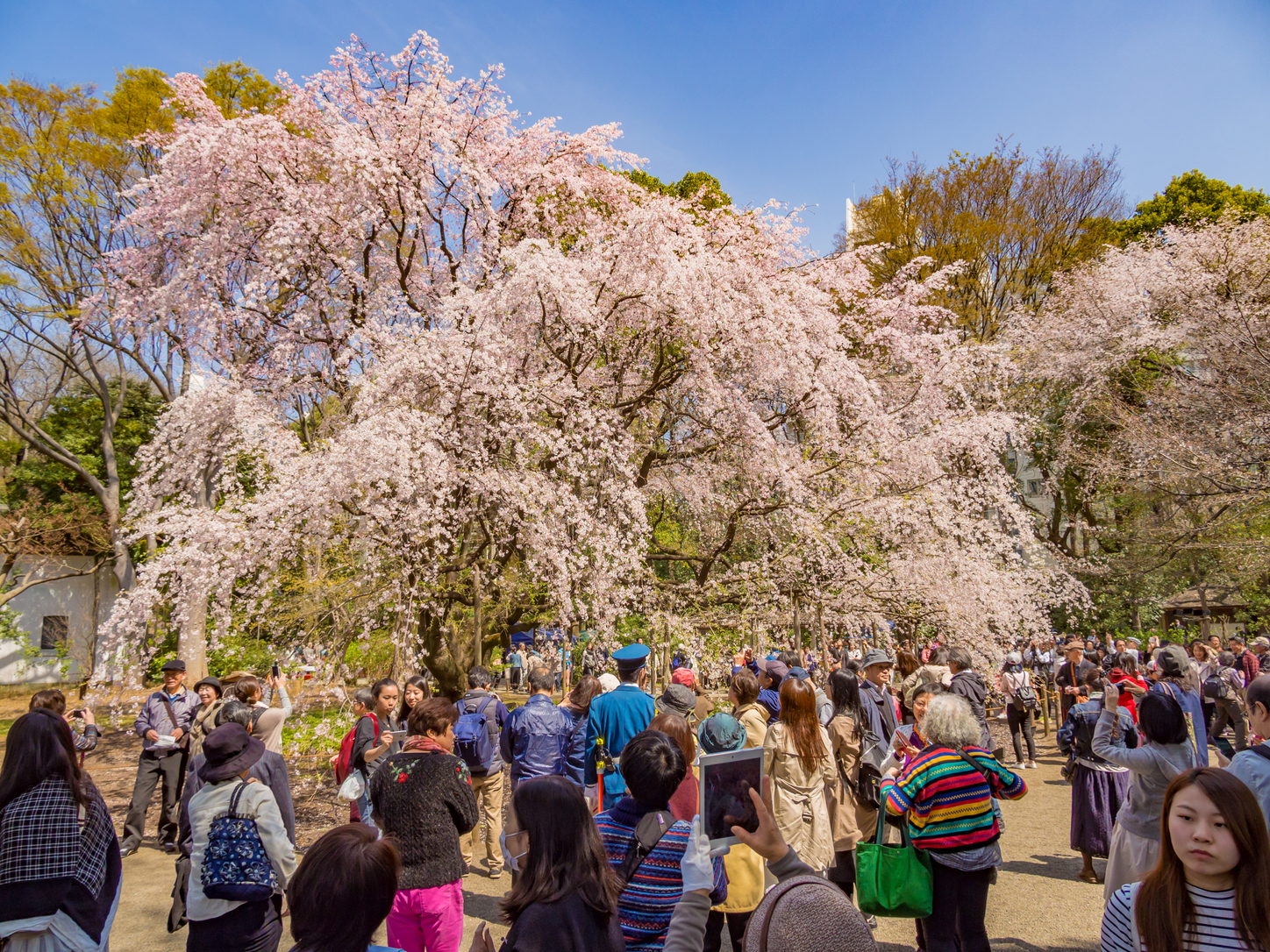
Rikugien Gardens
One of the older parks on the list, Rikugien has been a go-to park since 1695 in Tokyo. One of the biggest draws to the park is the evening illumination of the famed cherry blossom trees, from weeping sakura to more “fluffy” hybrids. The still waters and ponds promise stunning reflections and mirror effects. Rikugien Gardens are a favorite for photographers, so expect lots of elbows and watchdogs guarding prime spots to take award-winning photos. If the illumination doesn’t do much for you, daytime is always much quieter at this garden. Map
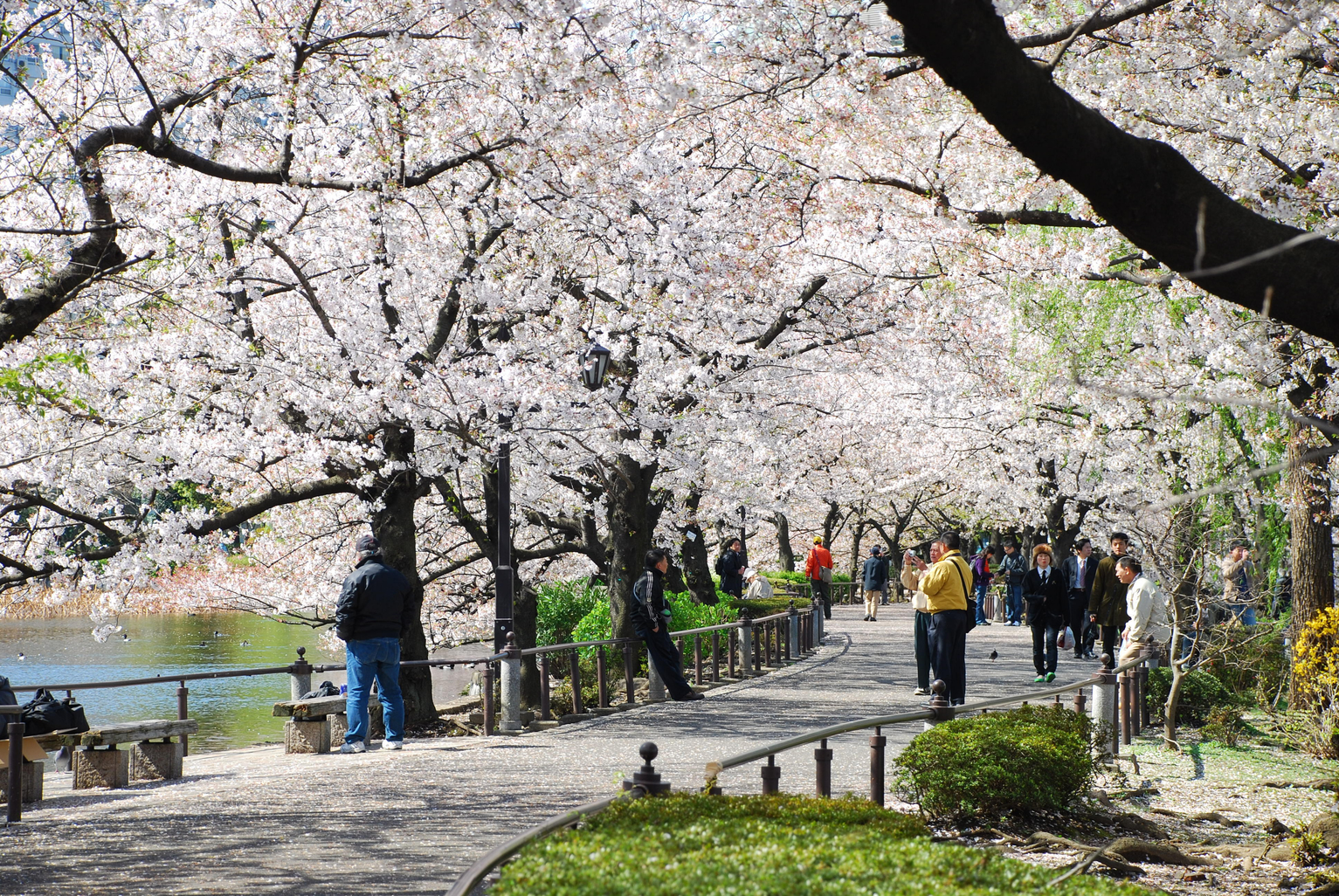
Ueno Park
Easily one of the most popular parks in Tokyo, Ueno Park boasts more than 800 trees growing across its broad expanse. An official “Sakura Matsuri” spans a week or two, depending on the length of the cherry blossom season that year, and provides even more entertainment than usual—live shows, food carts, parades, and other sightseeing experiences. It’s especially a hotspot for Tokyo families, due to the number of museums and zoos in the vicinity, so brace yourself for the throngs. Map
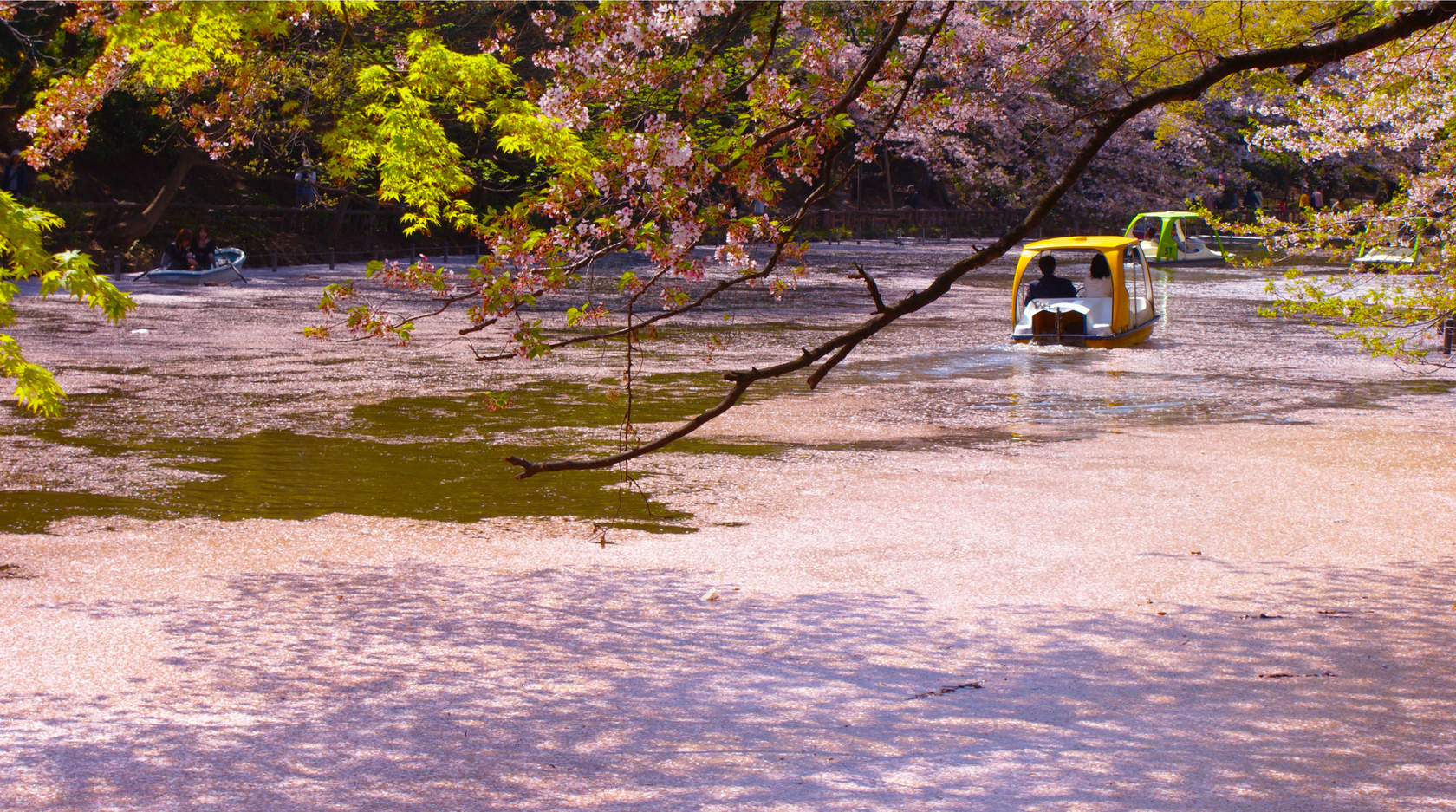
Inokashira Park
Inokashira Park in Mitaka is a stunning location for sky-high cherry blossom trees, which tower over picnic areas nestled along the riverbanks of Inokashira Pond. A dreamy place for a date, hanami party, or family outing, Inokashira Park has a great deal to offer visitors. The beloved Ghibli Museum is on the far southwest corner of the park, across the sports fields and play areas. Near the center of the park is a small zoo, with delightful, rustic restaurants on the slopes just around the pond, shrouded in bamboo. Rent small canoes or swan boats on the cheap in the afternoon, enjoy a dinner outside on a restaurant veranda during sunset, and stick around for after-hours illumination. Map
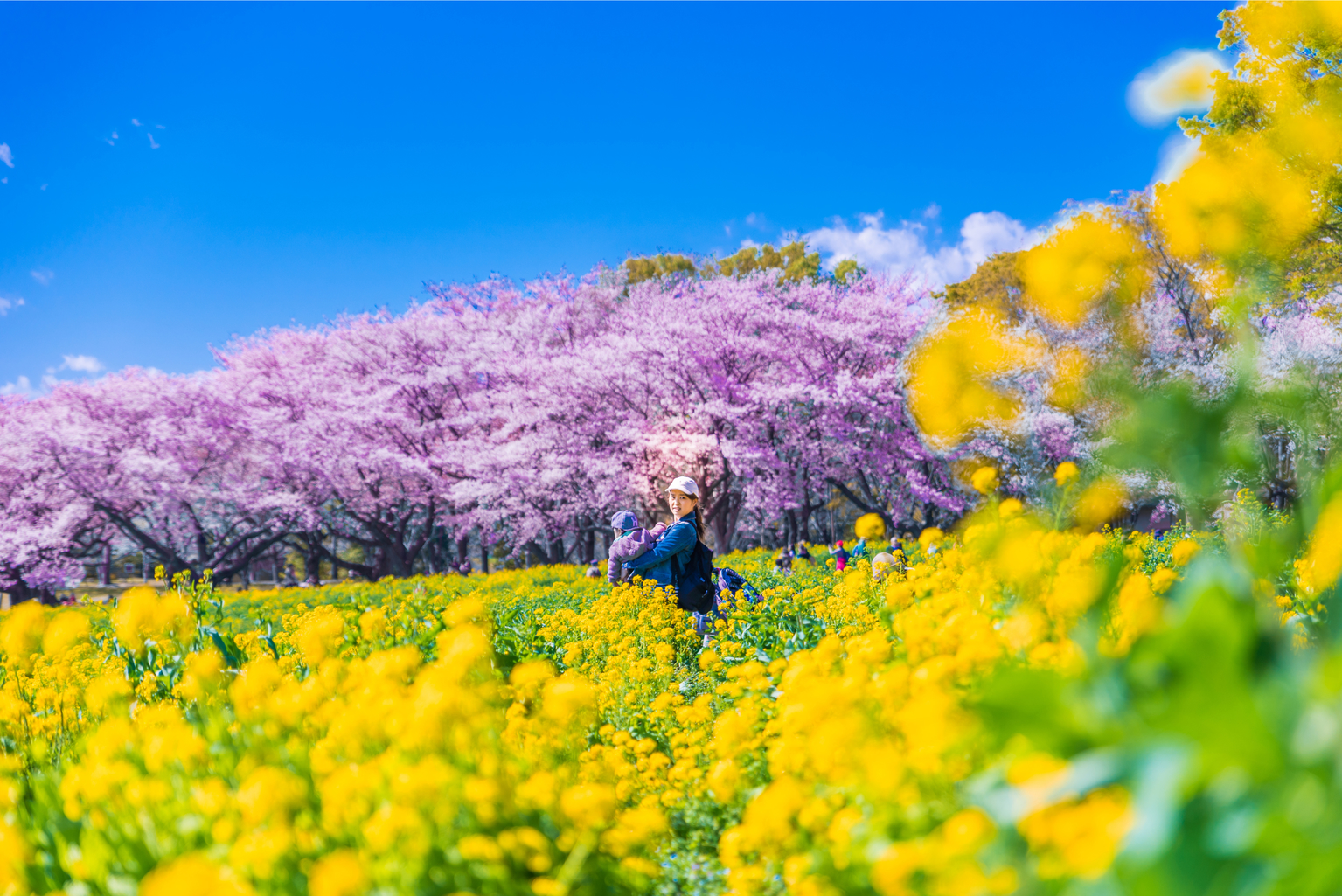
Showa Memorial Park
Although a bit removed from downtown Tokyo (30 minutes from Shinjuku by Chuo Rapid Express), Showa Memorial Park in Tachikawa is a remarkable park to revel in. Boasting the title of the largest park in the 23 wards of Tokyo – and one of the biggest in the nation – Showa Park offers a lot of ground to cover; rent a bike at the park entrance to breeze along marked paths! Barbecue areas, dozens of playground sets, an outdoor swimming area, fountains, various gardens and forests complement the cherry blossom environment. Kids can get their hands dirty and join in a hunt to identify and find different kinds of flowers and plants in the shade of the blossoms, and parents can join in a game of ultimate frisbee or croquet. Entrance is ¥490 for adults and free for kids under 15. Map
Check out our other cherry blossom guides for more blooms:
- Comprehensive: test3.tokyoweekender.com/2015/03/hanami-in-tokyo-the-weekender-cherry-blossom-guide/
- Round-up: https://test3.tokyoweekender.com/2021/03/top-most-beautiful-places-to-see-cherry-blossoms-in-tokyo/
Updated On January 11, 2023

